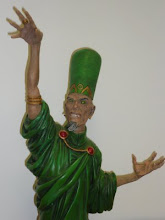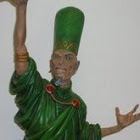 Clever, engaging and hugely enjoyable locked room murder mystery. In Tokyo a man is found dead in his house, when it is established that he was poisoned the investigation lead by Detective Kusanagi find that they have a locked room mystery on their hands. The victim was alone in the house and there were no signs of a struggle or break in and the most likely suspect in a domestic murder, the wife, was in another city at the time. Kusanaagi finds himself having a complicated response to the victims wife, Ayane, a reaction that leads another detective to enlist the aid of Professor Yukawa to see if he can provide some insight into the case. The story unfolds with great care and the reveals are cunningly staged and the possibilities of a locked room mystery are skilfully used. The solution is credible and satisfying and happily unexpected.
Clever, engaging and hugely enjoyable locked room murder mystery. In Tokyo a man is found dead in his house, when it is established that he was poisoned the investigation lead by Detective Kusanagi find that they have a locked room mystery on their hands. The victim was alone in the house and there were no signs of a struggle or break in and the most likely suspect in a domestic murder, the wife, was in another city at the time. Kusanaagi finds himself having a complicated response to the victims wife, Ayane, a reaction that leads another detective to enlist the aid of Professor Yukawa to see if he can provide some insight into the case. The story unfolds with great care and the reveals are cunningly staged and the possibilities of a locked room mystery are skilfully used. The solution is credible and satisfying and happily unexpected.Keigo Higashino has managed to solve the biggest problem with a locked room mystery with grace and flair, how to balance the requirements of plot mechanics with an engaging cast without loosing either. He manages this by credibly and thoughtfully aligning the motive and the plot mechanics so that the action is driven by the cast as they respond to the circumstances they find themselves in.
The cast are great, all of them are given the time and space to express themselves and engage the reader. Kusanagi is a competent, committed police officer who is finding an attraction to the victims wife creates a increasing pressure to protect her conflicting with a equally powerful duty to find the murderer. The way the conflict is managed is very smart, Kusanagi is aware of it as is his junior officer Utsumi who becomes concerned that it will undermine the investigation. In a wonderful piece of narrative control and direction it becomes an important part of the finding the thread that does finally lead to a solution.
Professor Yukawa is the way that the vital plot mechanics can be kept in view while not getting in the way of the cast. He takes a scientific interest in the case due to its apparent impossibility, his research is a clever way to establish the dimensions of the locked room mystery and close out each possible solution as it comes up without interrupting the parallel work of the investigation into the cast and context for the murder. He has information that ultimately is useless without the human element provided by the investigation.
The Japanese context is integral to the story, cast and plot mechanics and the transparent translation by Alexander O. Smith, Elye J. Alexander is vital to ensuring that details are not lost. The nuances and niceties are very important and they are all delivered without feeling clumsy or intrusive, the story flows in a very natural way.
Locked room mysteries are very tricky to deliver successfully, the solution must be credible without being too mundane, the perpetrator has to be as well disguised as the means used to kill the victim. This calls for a really strong control of the story to deliver s story that does not finally have to cheat the reader to gain the required effect. Keigo Higashino has managed it wonderfully, a great read, satisfying on every count.





